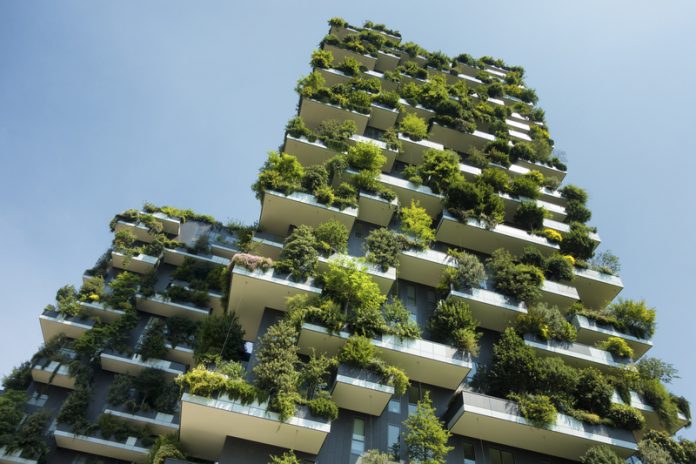Architects Perkins and Will, in partnership with Penoyre & Prasad, will offer net-zero carbon operational design strategies for new and retrofit buildings
According to the UK Green Building Council (UKGBC), the built environment contributes 40% of the UK’s total carbon footprint. The design strategies will help to reduce the real estate’s impact on the climate.
Designing in net-zero carbon targets for building operations has a crucial role to play in the property industry by slashing energy usage while helping future-proof assets against a backdrop of increasing regulation.
The partnership will produce a Zero Operational Carbon Strategies Report for each new build or retrofit project at RIBA Stage 2 (at the end of the concept design) at no additional cost to the client.
The Zero Operational Carbon Strategies Report will state the operational emissions gap of buildings and how best it can be closed in line the UKGBC’s 2019 definition of net-zero operational. This will help inform clients’ decisions in line with the UK’s 2050 net-zero target.
How to achieve net-zero operational buildings
To reach net-zero operational carbon for buildings, energy demand for heating and cooling through considerations such as insulation, controlled ventilation and heat pumps must be reduced.
Design strategies that maximise natural light could then be implemented to save significant energy, whilst also boosting human wellbeing.
As the majority of the energy demand for buildings must be met through on-site renewable energy, the remaining residual energy demand must be offset through investment in offsite renewable sources or through a credible and validated offset mechanism.
The pledge from Perkins and Will and Penoyre & Prasad will offer many strategies to clients to make them fully aware of the operational emissions gap of their building, and how they might close it most effectively.
Another key focus area of the pledge will be the health impacts of materials used both for the structure and internal fit out, with the aim of choosing long-lasting and non-toxic materials.
The two company’s clients will be able to choose between the ‘business as usual’ and a net-zero operational carbon design strategy for their project.
Asif Din, sustainability director at Perkins and Will, said: “With the UK pledging to be net-zero by 2050, designing in energy efficiency will ensure that these climate-resilient and carbon-efficient buildings will be attractive and viable investments, future-proofing clients against the possibility of stranded assets.
“The key thing is designing a degree of flexibility for buildings that isolates them from the outside environment when we need to control them while being able to open them up to it as and when it’s required. Really getting under the skin of how a building will operate is what will move the dial and if we can encourage our clients to take the more efficient option, we can start to reach our goal of a net-zero 2050.”
Mark Rowe, principal at Penoyre & Prasad, added: “Our industry still has a lot to learn when it comes to designing the built environment to address the climate crisis.
“This is a work in progress but is an effective and realistic first step towards changing the story. Our design strategies will actively try to reduce energy usage within our clients’ buildings, for both new projects and retrofit.
“We are committing to this pledge and I hope that as we engage more with our clients and design teams, we can develop and increase the presence of net-zero buildings across the country.”














